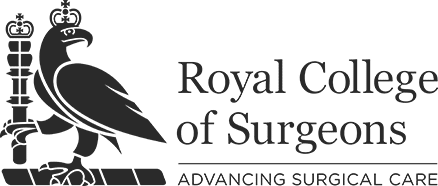ISAs are tax efficient funds that doctors, and all other UK taxpayers, can take advantage of to hold a range of different investments. If you hold assets in an ISA there is no tax on any income generated, that is on interest or dividends, and no tax on any capital gains arising on the disposal of assets held in an ISA. For most ISAs withdrawals can be made at any time. But how many ISAs can you have? And how much can you invest? In this article, Ed at Medics’ Money goes through the important points that all doctors should know about these important investment vehicles.
The main types of ISAs
There are four main kinds of ISAs:
- Cash ISAs which are basically tax-free savings accounts for cash;
- Stocks & Shares ISAs which can hold a variety of investments such as shares, unit trusts and bonds;
- “Innovative Finance” ISAs which hold peer-to-peer loans; and
- Lifetime ISAs which can be used to save for buying a first home or for retirement
To invest in an ISA, you must be resident in the UK and aged 18 or over (or 16+ for a cash ISA).
How much can I invest in ISAs?
Currently £20,000 can be invested in ISAs tax free each tax year and this amount can be split over the different types of ISAs, though for Lifetime ISAs (“LISAs”) there is a maximum limit of £4,000 (we go into LISAs in more detail below). So, you could invest £4,000 in a LISA, £10,000 in a Stocks & Shares ISA and £6,000 in a Cash ISA. Married couples or partners in a civil partnership will be able to invest £40,000 per tax year into ISAs and receive tax free income.
There is no minimum investment period so withdrawals from an ISA, other than a Lifetime ISA, can be made at any time without penalty.
How many ISAs can you have? And how many Stocks and Shares ISAs can you have?
From 6 April 2024 you can now set up more than one ISA of the same type (aside from LISAs – you can still only set up one of these in a tax year.)
Where an individual’s spouse/civil partner dies, the surviving spouse/civil partner is entitled to an additional ISA allowance equal to the higher of the value of the deceased’s ISA savings at the date of death or when the ISA is closed. This enables the surviving partner to reinvest the deceased’s ISA savings in their own ISA. This can be a new or existing ISA. To benefit from the relief the surviving partner must have been living with the deceased at the date of death.
Find a specialist medical financial advisor with Medics Money
Lifetime ISAs
Lifetime ISAs are a special type of ISA which can be set up between the ages of 18 and 39 years. They offer a distinct and potentially incredibly useful bonus: each tax year you can invest up to £4,000 in a Lifetime ISA and the government will top this up with a 25% bonus, up to a maximum of £1,000 per year. Say, for instance, that I decided to put £4,000 into my LISA in any given tax year. The government would then put 25% of that amount into the account – that is a £1,000 bonus from the government will be transferred into the account and the final amount in my LISA would be £5,000. You can contribute into the LISA up until the age of 50. Now, it goes without saying that we cannot offer financial advice in any capacity but we would, however, suggest that all doctors, under the age of 40 who don’t already have a LISA consider setting one up before their 40th birthday so that they still have the opportunity to contribute into the LISA if they would like to up until 50 years of age.
An extremely important set of conditions should be noted when it comes to withdrawing money from LISAs, as there are restrictions. Firstly, if you are a first-time home buyer you can withdraw the money to help to buy your first house as long as it’s worth no more than £450,000 and you have had the LISA open for more than twelve months. Aside from the housing condition, you can withdraw the money at any age if you become terminally ill, or when you’re aged 60 or over. If you withdraw the money for any other reason, you will incur a penalty charge at 25% of funds withdrawn (which is more punitive than just losing the 25% bonus since the penalty is applied to ALL funds in the LISA; 25% taken from a £5,000 LISA leaves you with £3,750).
For more information on LISAs why not check out the recent Medics’ Money podcast on it here https://www.medicsmoney.co.uk/ep-159-whats-the-deal-with-lifetime-isas/
Junior ISAs
Junior ISAs can be a great way for parents (or guardians with parental responsibility) to start saving for their children. In the current 2025/26 tax year up to £9,000 per annum may be invested into a Junior ISA for an individual under the age of 18.
Only a parent or guardian can open a Junior ISA but anyone can contribute money into it as long as the total amount paid in does not exceed £9,000 in the 2025/26 tax year. A child may only have a maximum of one cash Junior ISA and one stocks and shares Junior ISA.
Withdrawals from Junior ISAs are not generally permitted until age 18.

We teach doctors like you to make better financial decisions. Without working harder.
The Medics’ Money Financial Wellbeing course will teach you everything you need to know, and do to get the financial future you deserve without working harder.
Our course condenses years of financial expertise into an easy to follow framework that will set you up for financial success.
Hit apply now to secure your place on the next course starting October 2025.
Summary
ISAs are important tax efficient vehicles that every UK taxpayer can take advantage of. Up to £20,000 can be invested into a mix of ISAs each tax year and any income or capital gains generated will be tax-free. You can set up as many ISAs as you like in the tax year aside from LISAs where only one can be set up each tax year. LISAs can be used to save for retirement or to purchase a first home, subject to various restrictions. Junior ISAs can be used by parents to start creating a tax efficient financial nest egg for their children.








